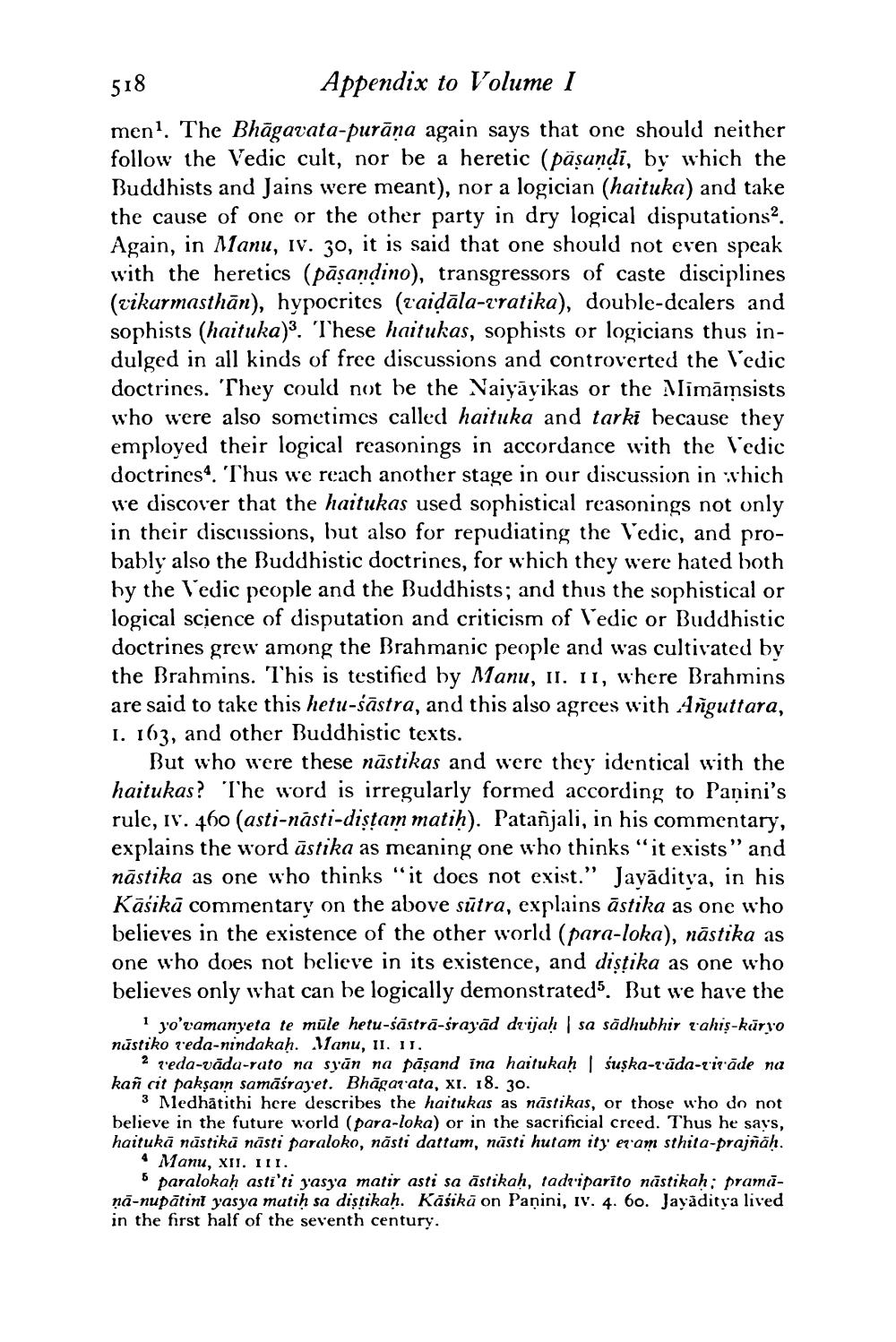________________
518
Appendix to Volume I
men1. The Bhāgavata-purāṇa again says that one should neither follow the Vedic cult, nor be a heretic (päṣandi, by which the Buddhists and Jains were meant), nor a logician (haituka) and take the cause of one or the other party in dry logical disputations2. Again, in Manu, IV. 30, it is said that one should not even speak with the heretics (pāṣandino), transgressors of caste disciplines (vikarmasthan), hypocrites (vaiḍāla-vratika), double-dealers and sophists (haituka)3. These haitukas, sophists or logicians thus indulged in all kinds of free discussions and controverted the Vedic doctrines. They could not be the Naiyayikas or the Mimāmsists who were also sometimes called haituka and tarki because they employed their logical reasonings in accordance with the Vedic doctrines. Thus we reach another stage in our discussion in which we discover that the haitukas used sophistical reasonings not only in their discussions, but also for repudiating the Vedic, and probably also the Buddhistic doctrines, for which they were hated both by the Vedic people and the Buddhists; and thus the sophistical or logical science of disputation and criticism of Vedic or Buddhistic doctrines grew among the Brahmanic people and was cultivated by the Brahmins. This is testified by Manu, II. 11, where Brahmins are said to take this hetu-sastra, and this also agrees with Anguttara, I. 163, and other Buddhistic texts.
But who were these nästikas and were they identical with the haitukas? The word is irregularly formed according to Panini's rule, IV. 460 (asti-nasti-diṣṭam matiḥ). Patanjali, in his commentary, explains the word āstika as meaning one who thinks "it exists" and nāstika as one who thinks "it does not exist." Jayāditya, in his Kāšikā commentary on the above sūtra, explains āstika as one who believes in the existence of the other world (para-loka), nāstika as one who does not believe in its existence, and diṣṭika as one who believes only what can be logically demonstrated5. But we have the
1 yo'vamanyeta te mule hetu-śāstrā-śrayād dvijaḥ | sa sädhubhir vahiş-karyo nastiko veda-nindakaḥ. Manu, II. 11.
2 veda-vāda-rato na syan na paṣand ina haitukah | śuşka-vāda-vivāde na kan cit pakṣam samāśrayet. Bhāgavata, XI. 18. 30.
3 Medhâtithi here describes the haitukas as nāstikas, or those who do not believe in the future world (para-loka) or in the sacrificial creed. Thus he says, haitukā nāstikā nāsti paraloko, nāsti dattam, nāsti hutam ity evam sthita-prajñāḥ.
4 Manu, XII. III.
5 paralokaḥ asti'ti yasya matir asti sa astikaḥ, tadviparīto nāstikaḥ; pramāṇā-nupātini yasya matiḥ sa diştikaḥ. Käsikā on Panini, IV. 4. 60. Jayaditya lived in the first half of the seventh century.




